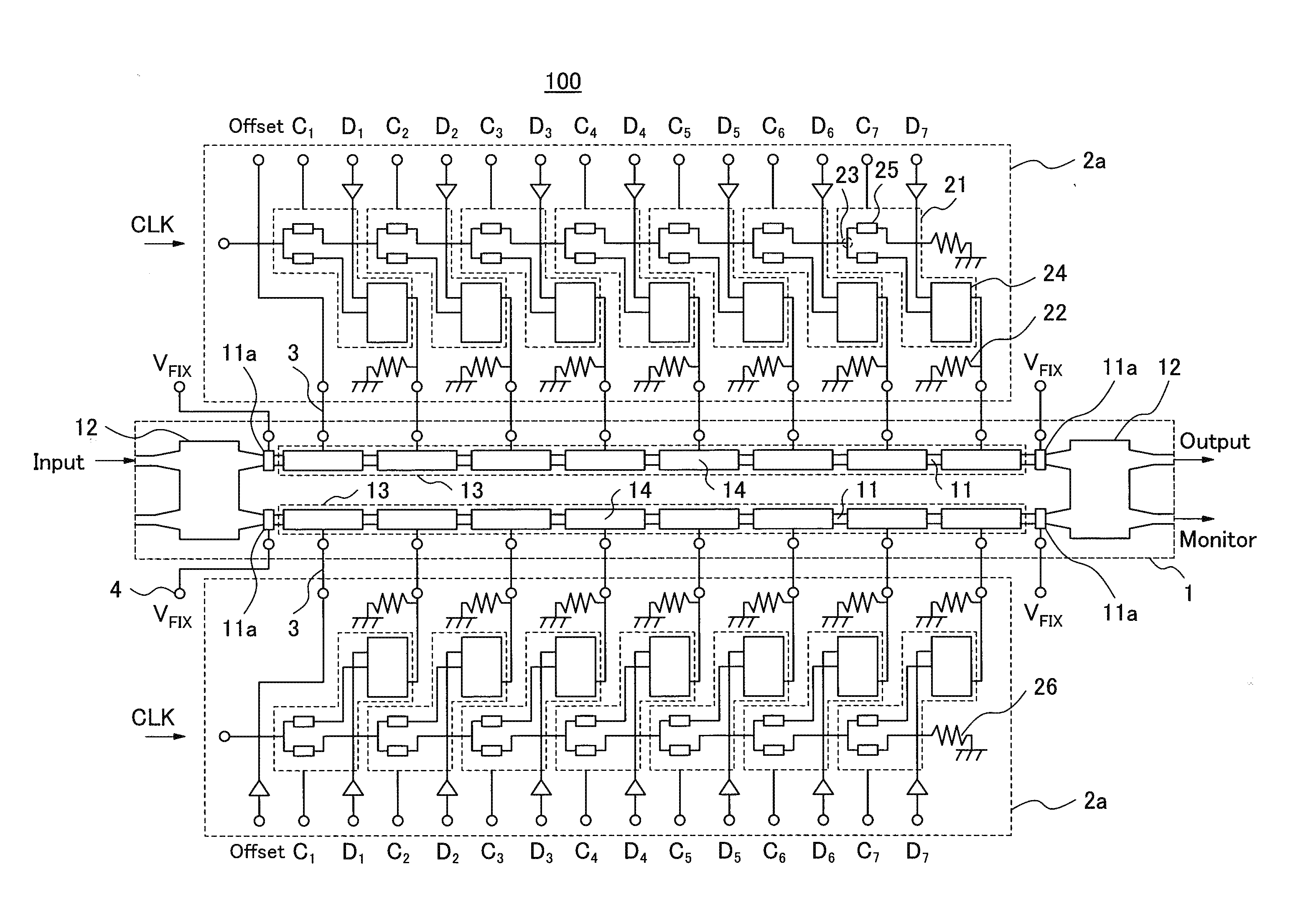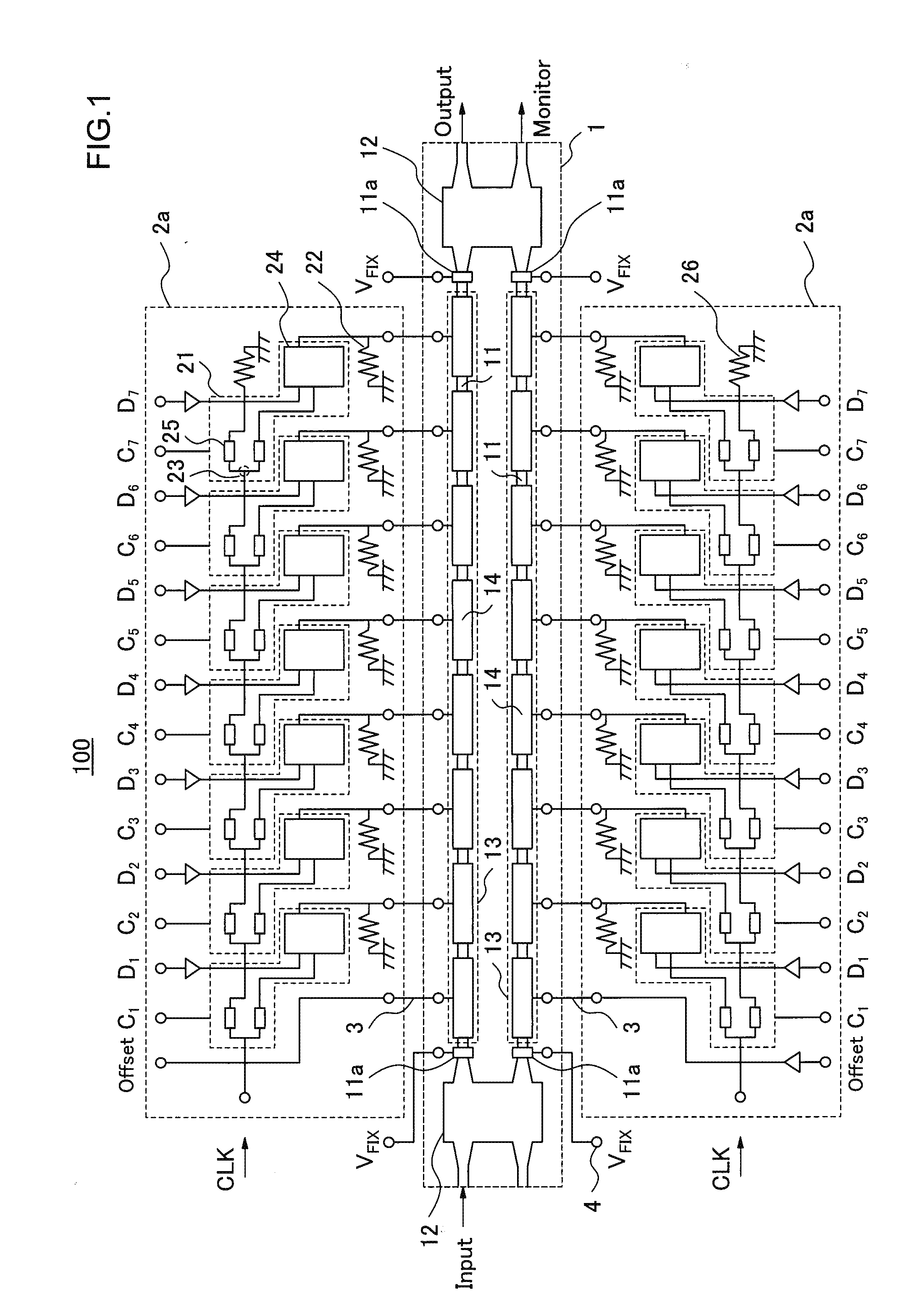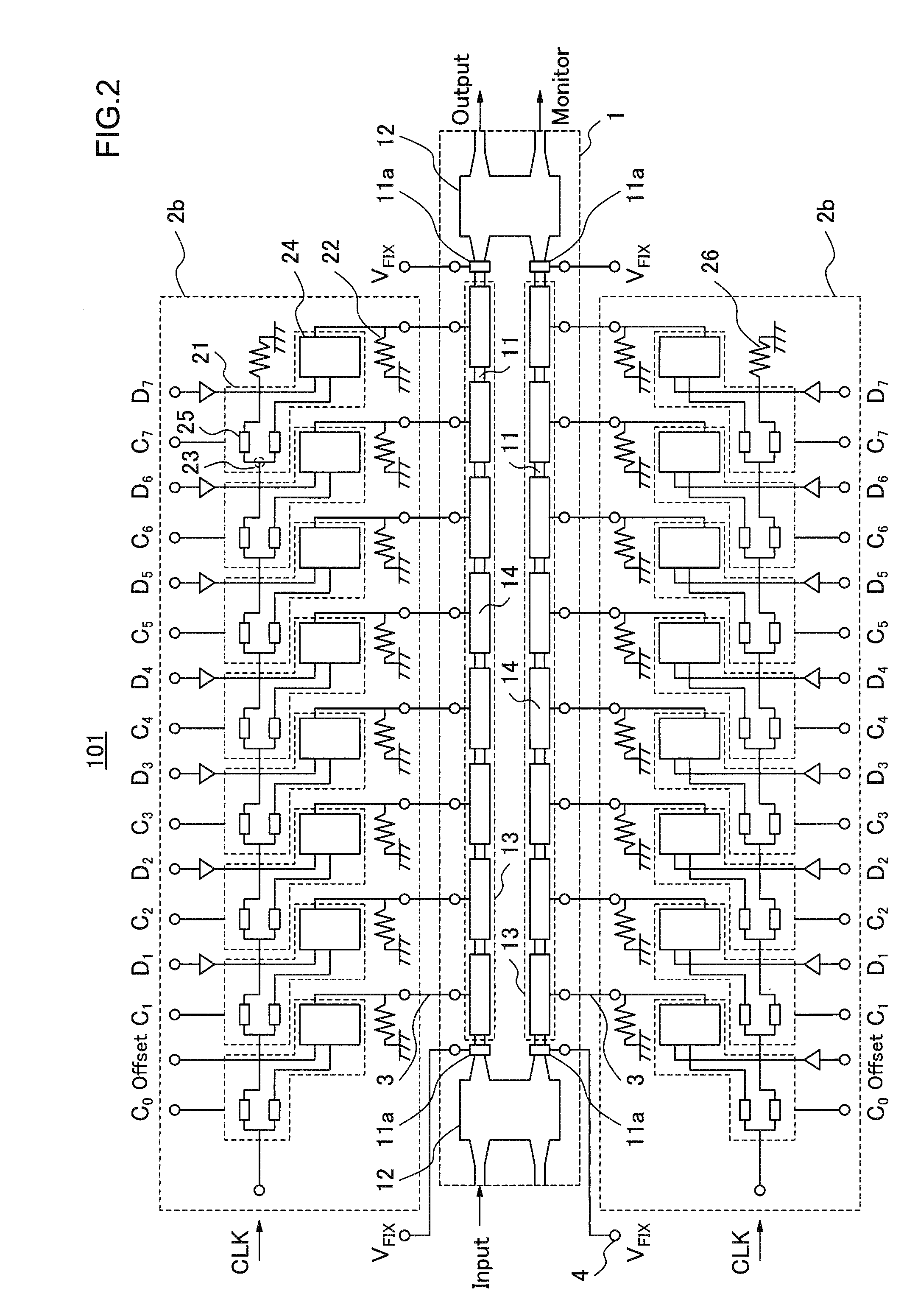Optical modulator module and modulation method for optical signal
a technology which is applied in the field of optical modulator module and modulation method of optical signal, can solve the problems of inability to achieve further improvement of transmission distance and transmission speed, inability to respect the modulator region as a uniform distribution any more, and inability to extend the modulator region from a viewpoint of modulation bandwidth improvement, etc., to achieve less distortion
- Summary
- Abstract
- Description
- Claims
- Application Information
AI Technical Summary
Benefits of technology
Problems solved by technology
Method used
Image
Examples
first exemplary embodiment
[0071]Hereinafter, exemplary embodiments of the present invention will be described with reference to the drawings.
[0072]FIG. 1 is a diagram illustrating a configuration of a multi-level optical modulator module 100 according to a first exemplary embodiment of the present invention. Hereinafter, a configuration of the multi-level optical modulator module 100 will be described. As shown in FIG. 1, the multi-level optical modulator module 100 includes an optical modulator 1 and two integrated circuits 2a.
[0073]The optical modulator 1 includes an MZ interferometer structure provided with two single-mode semiconductor optical waveguides 11 and optical multiplexer / demultiplexer units 12 each having two inputs and two outputs. As shown in FIG. 1, signal light Input is inputted from the left-hand side, and an output signal Output and a monitor output Monitor are outputted from the right-hand side. An optical phase modulator 13 is formed in each of the two semiconductor optical waveguides ...
first example
[0109]A first example is an operation verification example about the multi-level optical modulator module 100 according to the first exemplary embodiment.
[0110]In this example, the semiconductor optical waveguide 11 of the optical modulator 1 is formed on a Fe-doped InP semi-insulating substrate (not illustrated). A core layer and cladding layers which insert the core layer between the cladding layers from upper and lower directions are formed above the Fe-doped InP semi-insulating substrate. The core layer includes an undoped AlGaInAs multiple quantum well layer and undoped InGaAsP light confinement layers which are formed on the upper and lower faces of the undoped AlGaInAs multiple quantum well layer. This configuration is a so-called divided confinement heterostructure (neither of these layers being not illustrated). Here, the configuration of the undoped AlGaInAs multiple quantum well layers is such that: the number of well layers is 12; the thickness of the well layer is 10 nm...
second exemplary embodiment
[0115]Next, a programmable multi-level optical modulator module 200 according to a second exemplary embodiment will be described. FIG. 3 is diagram illustrating a configuration of the programmable multi-level optical modulator module 200 according to the second exemplary embodiment. As shown in FIG. 3, in the programmable multi-level optical modulator module 200, the integrated circuit 2a of the multi-level optical modulator module 100 is replaced by an integrated circuit 2c. As compared with the integrated circuit 2a, in the integration circuit 2c, the input interfaces for the digital input signal are changed so that modulator regions targeted for driving can be selected for each group of 2(m−1) stages of the modulator regions.
[0116]A terminal D of a discrete driving circuit connected to the second stage of the modulator regions 14 is supplied with, for example, an offset signal Offset. Further, each of subsequent stages of the modulator regions 14 is supplied with a corresponding ...
PUM
 Login to View More
Login to View More Abstract
Description
Claims
Application Information
 Login to View More
Login to View More - R&D
- Intellectual Property
- Life Sciences
- Materials
- Tech Scout
- Unparalleled Data Quality
- Higher Quality Content
- 60% Fewer Hallucinations
Browse by: Latest US Patents, China's latest patents, Technical Efficacy Thesaurus, Application Domain, Technology Topic, Popular Technical Reports.
© 2025 PatSnap. All rights reserved.Legal|Privacy policy|Modern Slavery Act Transparency Statement|Sitemap|About US| Contact US: help@patsnap.com



